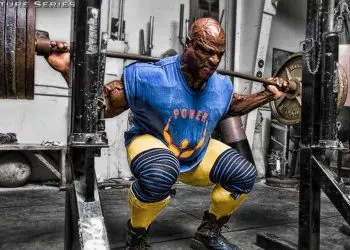Hello and welcome to another exciting edition of Body Mechanics. This week I felt it important to go over an exercise that is usually extremely uncommon in most gyms. The lack of presence should not serve to weaken the exercise, as it effectively emphasizes several muscle groups, both large and small. It also serves as a precursor, or a regression, to the exercise we discussed last week, the barbell clean and press.
Exercises that use several muscle groups should not be neglected because of their inability to isolate muscles. Today, what is practiced in most gyms is a bodybuilding type of training. Although this method is effective it is not appropriate for everyone, especially a beginner to resistance training.
Typically most people want one of two things; to lose fat or to get bigger. You might actually hear “I want to tone up” or “get ripped”. Their misinformation may serve to be their downfall. Let me explain. A person that wants to lose weight, for example, will get no benefit from isolation exercises as only one muscle group is targeted. How does this all tie in?
Firstly, when we perform multi-joint exercises there is a higher metabolic cost associated with it. Secondly, a compound exercise is far more valuable for losing weight because it targets several muscle groups and as we know the more muscle we have, the more calories are burned at rest. I could continue to explain this logic further, but I do not want to stray any further from todays subject; the multi-joint single arm shoulder press.
The muscles involved in this exercise starting with the lower extremities are the gluteus maximus, quadriceps, hamstrings, and gasrocnemius. The upper extremities include the anterior deltoid, mid/rear deltoids, triceps, trapezius, pectoral muscles, erector spinae, and the core musculature
Start by placing a barbell in a landmine, or a corner to ensure the bar does not slide. You can also place it in the “T” base portion of a bench.
Level Up Your Fitness: Join our 💪 strong community in Fitness Volt Newsletter. Get daily inspiration, expert-backed workouts, nutrition tips, the latest in strength sports, and the support you need to reach your goals. Subscribe for free!
• Feet should be hip width apart
• Place the bar in either hand in a neutral grip
• Start by placing the end of the bar approximately at shoulder height (don’t make contact with the end of the bar with shoulder)
• Arm should be flexed and upper arm at about 30 degrees to the ground
• Rotate the trunk ever so slightly, contralateral to the side loaded with the bar
• Flex at the hips and perform a squat so that legs are almost parallel to the ground
• This is the start position
• Extend at the hips knees and ankles (Triple extension) so that you’re on your toes
• At this point you will press the bar until your arm is extended fully, but not forcefully
• Return the bar down to shoulder height (No contact)
• Rotate the torso ever so slightly, contralateral to the side loaded with the bar
• Flex at the hips and perform a squat as above
• That completes on repetition
A simple exercise, but before we proceed I wanted to explain the term “regression” so that we are on the same page moving forward. The word refers to the modification of an exercise in a manner so that the same muscles are targeted. Manipulating only the environment, position, equipment or difficulty of the exercise, while maintaining a similar or exact range of motion so the trainee may execute the movement.
As mentioned above, last week we talked about the barbell clean and press, this week we regressed to a simpler movement that mimicked the use of the same muscles as in the exercise featured last week. Typically when regressing an exercise we want to transition from a unilateral movement to a bilateral movement. In this case we went in the opposite direction however, because the barbell has one end fixed and it is still easier to complete than the clean and press, thus making it a regression.
Once we have mastered this exercise we can manipulate it to effectively challenge the trainee who may not be ready to complete a barbell clean and press, but needs to be challenged. The above exercise was broken down into two phases, the squat and the press. Once these movements are mastered and strength is improved we can combine the two phases as one. At this point we will be lowering the bar while simultaneously squatting in a fluid movement. This means the tempo is changed and the exercise becomes an explosive movement that focuses on improved power mechanics. As always start with a load that allows you to practice proper technique and a full range of motion, and remember the idea is to get better with every set, rep and breath!
Happy Lifting!





